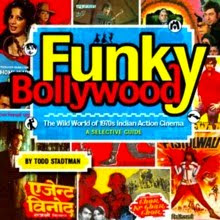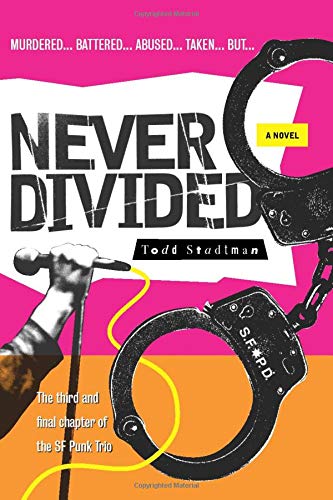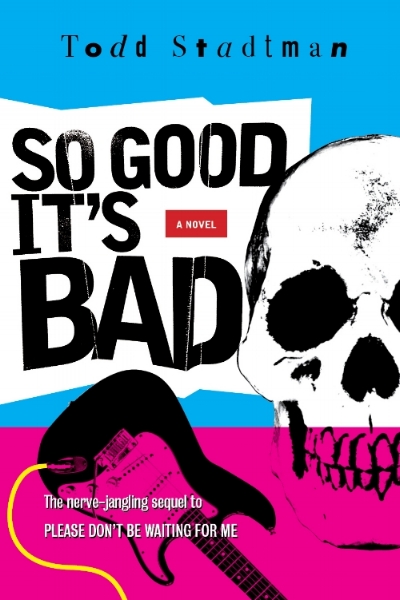The Krasue, as it's called in Thailand, is a horror found throughout the folklore of Southeast Asia. In Indonesia it's know as the Leak, in Cambodia as the Ap, and, in the Philippines, as Manananggal. Its presence is just as prominent in the cinema of the region, with probably its most widely known representation being in that Indonesian monument to all that is bizarre and lysergic,
Mystics in Bali.
At least up until the present day, the special effects used to portray the Krasue on screen have been crude, but the very
idea of it is unsettling enough for the creature to lose none of its power despite that. That fact puts a humble film like
Ghosts of Guts Eater miles ahead of the vast majority of horror films produced today, most of which seem too preoccupied with putting shiny, state-of-the-art pavement over the same well traveled roads to even aspire to being scary on any deeper conceptual level.
Ghosts of Guts Eater, somewhat jarringly, wastes absolutely no time in introducing us to the Krasue, giving us an explicit close up of the spirit in all its gruesome glory during the film's opening frames. For those unfamiliar, what we see is an airborne female head -- in this case of an old woman -- with its complete digestive tract, intestines included, dangling freely beneath it as it sails menacingly through the night sky. It seems that this particular Krasue has been raiding the local chicken coops for food, and, as the film opens, a group of torch wielding villagers are bearing down on it, determined to put a stop to its poultry poaching activities.

In the ensuing melee, the Krasue is mortally wounded, but manages to wing its way back to the home of its host body, which belongs to the elderly grandmother of Bua Klee (Pisamai Vilaisakoi), a comely young village girl. Bua Klee, who is unaware of her nan's freaky nocturnal wanderings, comes upon the dying old woman once she has managed to get herself all reattached. Claiming to have been attacked by a prowler, her grandmother, as a last wish, gives to Bua Klee a ring which she asks her to wear at all times. Not surprisingly, this ring is later revealed to be the medium through which the older woman's spirit will call to Bua Klee, beckoning her to also roam the night as a Krasue in order to feed grannie's insatiable hunger.
While chicken will apparently do in a pinch, what the Krasue really hungers for is babies, and the younger the better. As legend has it -- and as
Mystics in Bali so boldly depicted -- they're even not above eating them straight from the womb when the opportunity presents itself. Thus, on Bua Klee's freshman flight as a Krasue, she finds herself drawn to a fresh placenta that, in keeping with certain Thai traditions, is being kept in a container at the foot of the bed of a newborn's parents. Unfortunately for Bua Klee, the couple awakes before she can chow down, and they are able to shoo her away, leaving Bua Klee to fly off into the night hungry. (Amusingly, the village folk in
Ghost of Guts Eater treat the Krasue less like some unspeakable horror from the supernatural world, and more just like a common nuisance of rural living, like an invading bat or raccoon.) Meanwhile, Muang, Bua Klee's husband, begins to suspect something is amiss when he awakes to find his wife sleeping sans her head.
Muang is played by Sombat Methanee, who was the top male star in Thailand at the time -- and whom many could be forgiven for thinking was the
only male star in Thailand at the time, given just how often he turns up in these movies. Methanee was famous primarily as a hero of action films, yet here, though garnished with a couple fight scenes in which he can show his stuff, his is a relatively low key co-starring role that serves as a testament to the versatility required by his ubiquity. Like so many Southeast Asian horror films based in local folklore -- and I'm thinking in particular of those many Indonesian films starring
Suzzanna --
Ghost of Guts Eater is largely a woman's story, with the tragic Bua Klee at it's center, and Methanee's Muang for the most part relegated to the part of helpless witness and beleaguered albeit loyal spouse.
To this end, Muang manages to convince himself that his encounter with the headless Bua Klee was just a dream. Yet his denial becomes harder to maintain once the young couple who were the victims of her previous night's attack identify Bua Klee as the Krasue. After a disastrous attempt at an exorcism by a local doctor, and with the townsfolk increasingly turning against them, Muang and Bua Klee take to the road, eventually finding shelter with a relative in another village. At which point Bua Klee's without-a-body experiences continue.
Ghost of Guts Eater takes place in a world in which the supernatural is a commonplace and accepted part of everyday life. Thus, in addition to negotiating the potential pitfalls of a marriage in which one party spends part of her time as a flying, entrails-trailing, disembodied head, Bua Klee and Muang also encounter, in the course of their travels, a cyclopean demon with a hidden treasure and a beautiful young woman who manages to hex Muang with a love spell. Most stirringly, Bua Klee finds that she has, by pursuing her activities as a Krasue in her new surroundings, invaded the air space of a rival Krasue, who hunts for fetuses alongside her husband, a flying demon. This leads to an aerial battle between the two that ends with Bua Klee chomping the other right on her exposed colon. Needless to say, it is a scene that I will remember and cherish for the rest of my life.
If you have never seen one of these old, folklore based, Southeast Asian horror films,
Ghost of Guts Eater will no doubt be a source of much novelty and astonishment. If you have, well, I have good news, because there is much to recommend
Ghost of Guts Eater nonetheless. The film forgoes the meditative pacing and jarring comic interludes typical of other Thai horror films of its era and, while a bit episodic, gives us a narrative that coasts along at a brisk and engaging pace. Further encouraging our involvement is a sympathetic portrayal of its monster -- again, not uncommon for these types of films -- that nonetheless preserves its viscerally horrifying nature. Lastly, the special effects, while primitive, range from charming to eerily evocative, and director S. Nawaraj elsewhere provides visuals that make handsome use of the colorful palette with which vintage Thai cinema has become so inseparably associated.
In short,
Ghost of Guts Eater is a bit of a gem, and one that I would recommend to anyone who can stomach the idea of a woman's head flying around with its guts out. I'd think that wouldn't be too much to ask, as most of the people in
Ghost of Guts Eater don't seem to be too repulsed by the thing's nasty appearance, and instead appear to regard it as a particularly annoying and persistent household pest.



































































































